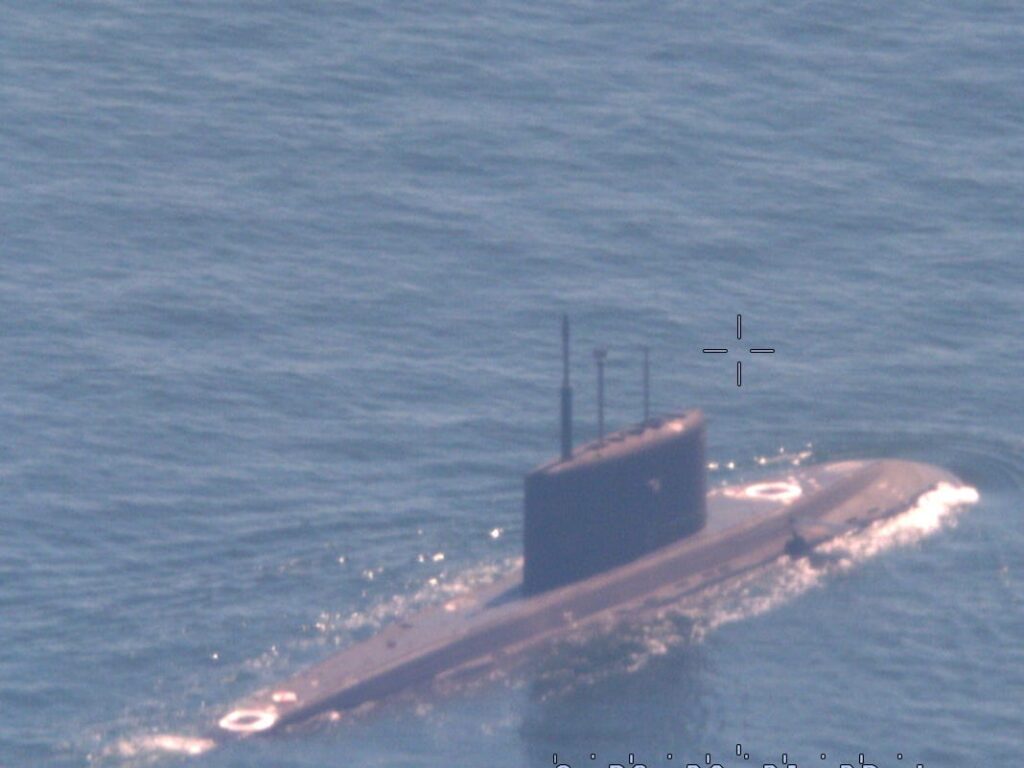-
A NATO ally captured footage of a Russian submarine in the Baltic Sea last week.
-
The submarine was discovered by a Portuguese P-3 Orion patrol aircraft.
-
Russia recently conducted submarine exercises in the Baltic Sea, including a torpedo duel.
An anti-submarine aircraft from a NATO ally last week took photos of a Russian submarine sailing in the Baltic Sea, underscoring the alliance’s ongoing efforts to monitor Russian activities in the undersea region.
The surveillance photos, which show the submarine above water, were taken around the same time as the Russian military conducted submarine exercises in the Baltic Seain which two submarines became involved in a torpedo duel.
NATO Maritime Command the photos shared on X and other social media platforms on Wednesday, noting that the Russian submarine was photographed by a Portuguese P-3 Orion maritime patrol aircraft, an ASW platform operated by Lockheed Martin.
The P-3 Orion anti-submarine and maritime surveillance aircraft was used by the U.S. Navy for decades until it was succeeded by the advanced P-8A Poseidon, an advanced aircraft introduced in 2013 and highly regarded as one of the best maritime patrol aircraft in serviceOther countries still use the P-3s.
A P-8 Poseidon recently flew over the Norwegian Sea Late last month, the mission was accompanied by a U.S. nuclear-capable ballistic missile submarine and other vessels and aircraft, including an E6-B Mercury “Doomsday” aircraft, in an apparently unusual occurrence amid ongoing tensions with Russia.
Although it is unclear what Russian submarine was captured in these photos, Russia recently conducted a submarine exercise in the Baltic Sea. Two Russian Kilo-class, diesel-electric submarines — the Novorossiysk and Dmitrov — engaged in a training duel with torpedo fire last week, around the same time the NATO photos were taken.
After the duel ended, the Russian submarines — capable submarines known for their relatively quiet nature, especially the more advanced Novorossiysk — continued to conduct other combat exercises in the Baltic Sea, Russian state media reported.
The Baltic Sea, where the exercises took place, has a major geopolitical shift in recent years with the Russian invasion of Ukraine and Finland and Sweden both joining NATO, Sweden becoming the newest member in March 2024.
Now that eight of the nine countries bordering the Baltic Sea are NATO members, with Russia being the only remaining one, the body of water is sometimes referred to as a “NATO lake,” although this term has been criticized because they obscure the strategic importance of the region for both NATO allies and Russia.
Russian submarines operate far beyond the Baltic Sea and remain an important element of the Russian Navy. For example, the submarine Kazan was spotted in Cuba recently during a visit by a Russian naval fleet and prior to exercises in the Caribbean. The Kazan is one of the class Russian submarines have worried NATO allies for years.
Read the original article at Business insider

